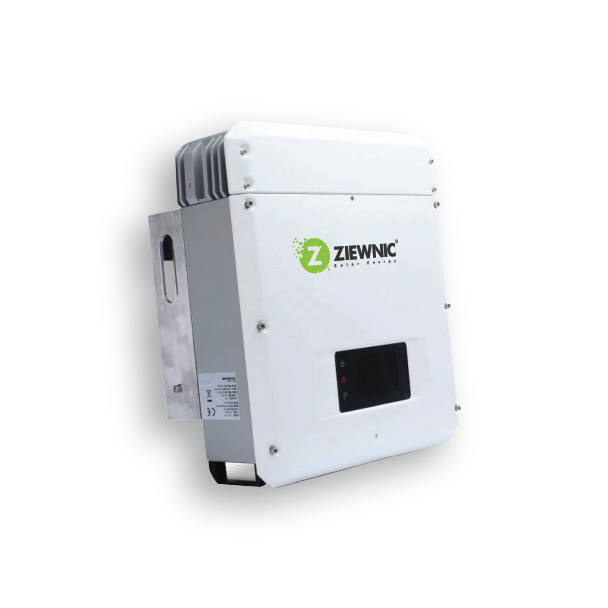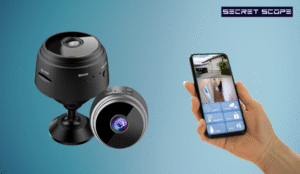Compact Power, Big Performance: A Complete Guide to the 2KW Three-Phase Inverter
In a world where energy demands are evolving rapidly, the need for efficient, compact, and versatile power conversion systems has...

In a world where energy demands are evolving rapidly, the need for efficient, compact, and versatile power conversion systems has become more crucial than ever. While large-scale solar and industrial systems dominate conversations, there’s an increasing demand for smaller, precise solutions that still offer robust performance. Enter the 2KW Three Phase Inverter—a compact yet powerful tool that plays a critical role in residential and light commercial power systems.
Designed for applications that require three-phase output at a relatively low power level, this inverter strikes the perfect balance between efficiency and cost-effectiveness. Whether you’re looking to support small three-phase motors, run sensitive equipment, or integrate a low-capacity solar system, this inverter offers a smart and scalable solution.
What Is a 2KW Three-Phase Inverter?
A 2KW three-phase inverter is a device that converts DC (direct current) electricity into AC (alternating current) with three-phase output and a total capacity of 2 kilowatts (2000 watts). Three-phase AC power is commonly used in industrial and commercial settings due to its ability to power heavy machinery and motors more efficiently than single-phase systems.
While large inverters often dominate the commercial market, a 2KW capacity is ideal for smaller-scale operations that still require three-phase functionality—making it perfect for workshops, home-based industrial applications, or compact renewable energy systems.
How Does a Three-Phase Inverter Work?
Unlike single-phase inverters that produce one alternating current waveform, three-phase inverters generate three separate AC outputs that are offset by 120 degrees. This allows power to be delivered more consistently, reducing energy losses and improving the performance of motors and other inductive loads.
In solar or energy storage applications, the inverter typically draws DC power from solar panels or batteries and converts it into three-phase AC for use on the load side or for feeding into a three-phase utility grid.
Why Choose a 2KW Inverter with Three-Phase Output?
You might wonder why a small-scale 2KW inverter would be designed with a three-phase output. The answer lies in its specialized use cases and technical advantages:
✅ Powering Small Three-Phase Motors
Some machinery, pumps, and tools require three-phase input but don’t consume a lot of power. A 2KW inverter is perfect for running such equipment in homes, farms, or garages.
✅ Grid Compatibility in Certain Regions
In some countries, the power grid in residential or small commercial areas is already three-phase. A 2KW three-phase inverter can seamlessly integrate with this infrastructure.
✅ Balanced Load Distribution
Three-phase power systems distribute electrical loads more evenly, reducing wear and tear on appliances and improving overall system stability.
✅ Improved Energy Efficiency
For applications that require consistent torque (like compressors or induction motors), three-phase power is much more efficient and reliable, even at lower capacities.
Common Applications of a 2KW Three-Phase Inverter
Despite its modest power rating, the 2KW three-phase inverter serves a variety of niche but important roles:
🏠 Residential Solar Systems with Three-Phase Grid
In homes connected to a three-phase grid, this inverter enables small-scale solar production without the need for load balancing across phases.
🏭 Small Workshops and Garages
Perfect for DIY spaces or hobbyist workshops that use small lathes, CNC machines, or compressors that need three-phase input.
🌾 Agricultural Equipment
Ideal for farms running lightweight machinery such as irrigation pumps, grain grinders, or ventilation systems.
⚡ Power Backup Systems
When paired with batteries, the inverter can provide three-phase emergency power for small commercial setups.
🔬 Lab or Educational Environments
Used in technical training labs or research setups that simulate industrial conditions at lower power levels.
Key Features to Look For
When choosing a 2KW three-phase inverter, it’s important to consider several technical aspects that will affect its performance and compatibility:
🔌 Input Voltage Range
Make sure it supports your energy source—whether that’s solar panels (typically 24V or 48V systems), batteries, or another DC source.
🌐 Grid-Tie or Off-Grid Capability
Some inverters are purely grid-tied, while others work in off-grid or hybrid systems (integrating solar, battery, and grid power).
🔄 Pure Sine Wave Output
A pure sine wave inverter ensures smooth and stable electricity, critical for running motors and sensitive electronics.
🧠 Built-In MPPT (if solar-powered)
If you’re using it with a solar array, a Maximum Power Point Tracking (MPPT) controller boosts efficiency by optimizing voltage and current input from the solar panels.
📶 Monitoring & Communication
Modern inverters come with Wi-Fi or RS485 communication, allowing for real-time performance tracking and remote diagnostics.
Pros and Cons of a 2KW Three-Phase Inverter
Here’s a quick breakdown to help you evaluate if this inverter size fits your needs:
✅ Advantages
- Compact and lightweight
- Ideal for low-power three-phase loads
- Compatible with solar and battery systems
- Lower cost compared to higher-capacity inverters
- Efficient for specific industrial and farming tasks
⚠️ Limitations
- Not suitable for high-power machinery
- Limited expansion capability
- Some regions may not support three-phase at residential level
- Requires balanced loads across phases for optimal performance
Installation Tips
While smaller in size, a 2KW three-phase inverter should still be installed carefully to ensure safety and performance:
- Check Local Grid Requirements: Ensure your grid supports three-phase input/output at your property.
- Use Certified Electricians: Especially important for grid-tied systems and three-phase connections.
- Follow Manufacturer Guidelines: Proper wiring, fusing, and grounding are essential.
- Ventilation Matters: Install the inverter in a cool, shaded, and well-ventilated location.
- Balance Your Load: Try to distribute electrical loads evenly across the three phases to avoid imbalances.
Cost and Value for Money
A 2KW three-phase inverter is significantly more affordable than larger industrial models, and it offers great value for small-scale users with specific needs. Depending on brand and features, prices typically range from $300 to $900 USD, with higher-end models offering smart monitoring and hybrid functionality.
With minimal maintenance and high efficiency, the long-term value of these inverters lies in their reliability, low operating costs, and ability to handle specialized three-phase applications.
Final Thoughts: Is a 2KW Three-Phase Inverter Right for You?
While not as common as higher-capacity units, the 2KW three-phase inverter fills a unique gap in the market. It’s a smart choice for users who need the benefits of three-phase power—balanced loads, efficient motor operation, and grid compatibility—without the high costs or complexity of larger inverters.
If you operate a small workshop, own a farm, or live in a home with three-phase infrastructure and modest energy needs, this compact inverter could be the perfect balance between capability and economy.





